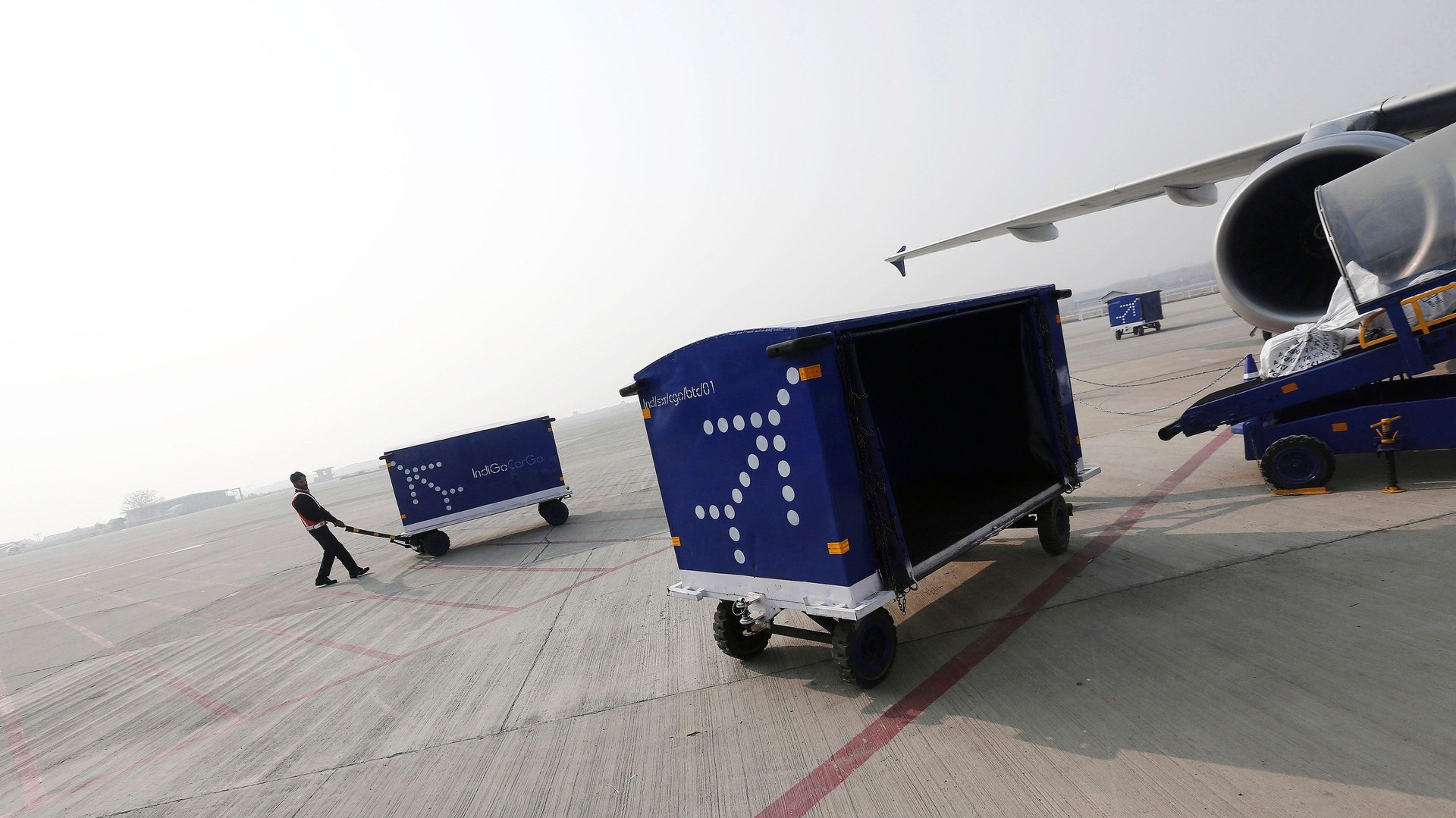India’s largest airline is profitable again—but only barely
India’s largest airline by market share has swung back to profitability, but it’s still nowhere close to its glory days.


India’s largest airline by market share has swung back to profitability, but it’s still nowhere close to its glory days.
InterGlobe Aviation, which operates the low-cost airline IndiGo, has reported a net profit of Rs190.9 crore ($268 million) for the three months ended Dec. 31, 2018. Revenues in the financial third quarter were up 28.1% year-on-year at Rs1,916.2 crore.
However, the good news was tempered by the fact that profits were still 74.95% lower than the Rs762 crore posted in the December quarter of 2017.
During July-September 2018, the company had posted a loss of Rs652 crore for the first time since listing on the stock exchange three years ago. Its loss during that quarter stood .
And IndiGo wasn’t alone. Almost throughout 2018, Indian airlines such as Jet Airways and SpiceJet suffered the double whammy of rising aviation turbine fuel prices and a depreciating rupee, which weighed heavily on their expenses, most of which are dollar-denominated.
“Though we have seen a reduction in fuel prices in this quarter as compared to the previous quarter, on a year-over-year basis, fuel prices are still 31% higher and the Indian rupee is weaker by 11%. Both these factors have impacted our profitability compared to the same period last year (December 2017),” interim CEO Rahul Bhatia said on an earnings call with analysts, on Jan. 23.
In October-December 2018, higher fuel prices raised IndiGo’s costs by Rs730 crore, and a weaker rupee raised expenses by an additional Rs270 crore, chief financial officer Rohit Philip said on the call.
Every seat counts
IndiGo has been increasing its fleet size in a bid to consolidate its domestic market share further and also spread its wings on more international routes. The carrier added 55 new planes in 2018—“nearly one every week,” Bhatia said on the earnings call—bringing its fleet size to 208 aircraft. It plans an even faster increase in fleet size for the current financial quarter ending March.
“We expect a year-over-year capacity increase in terms of ASK of 34% for the fourth (March) quarter,” Philip said. ASK, or available seat kilometres, is the number of seats available multiplied by the distance flown, and is an important metric to gauge an airline’s passenger-carrying capacity.
However, IndiGo’s capacity utilisation—the share of overall seats that is actually filled—decreased by about 3% in the December quarter.
Intense competition in India’s domestic aviation industry has also kept airfares low. This weighed on IndiGo’s revenue per available seat kilometre (RASK), which fell 3% year-on-year to Rs3.7.
“October was another month in which pricing in the market was very, very competitive,” William Boulter, the airline’s chief commercial officer, said on the earnings call. “But then, as we ran into Diwali and into the peak season in November and December, the pricing environment improved quite markedly.” This resulted in RASK improving by nearly 15% compared to the September quarter.
But the holiday season may not have been IndiGo’s only advantage. “On the most competitive routes, they have kept it a point to gain market share. And on the less competitive routes, such as Kolkata to the northeast, where they have a monopoly, they have made sure they earn money,” an aviation analyst told Quartz on the condition of anonymity.